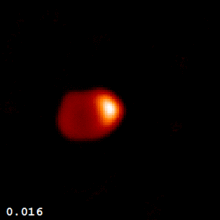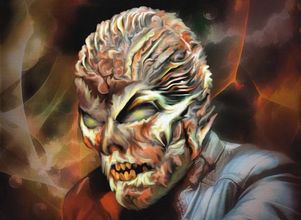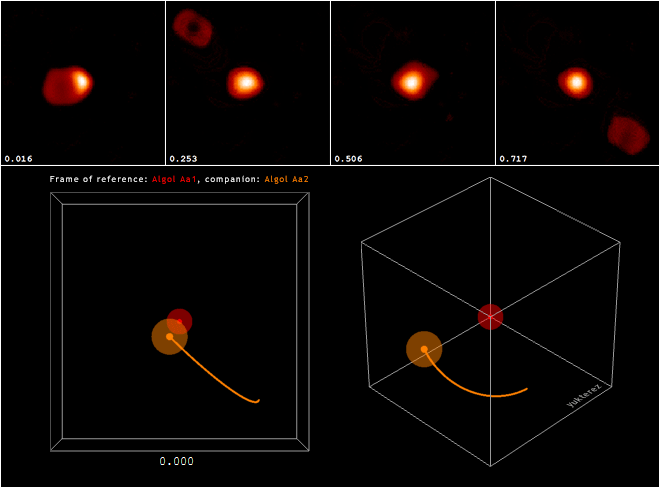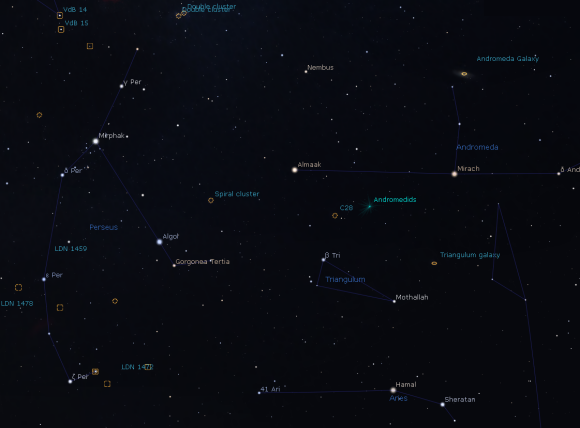 Look high to the northeast where you will locate one of the northern skies more important constellations, the great hero of Greek mythology, Perseus. Legends associated with Perseus exist in various cultures; some may be traced back as far as the 5th century BC. One tale in particular, his quest to rid the world of the hideous gorgon, Medusa, a creature whose hair was a nest of venomous snakes and glance would literally petrify the unfortunate who looked upon her, is well known, part of which relates to the rescue of the Princess Andromeda. The tale also has a connection with a particular star within the constellation.
Look high to the northeast where you will locate one of the northern skies more important constellations, the great hero of Greek mythology, Perseus. Legends associated with Perseus exist in various cultures; some may be traced back as far as the 5th century BC. One tale in particular, his quest to rid the world of the hideous gorgon, Medusa, a creature whose hair was a nest of venomous snakes and glance would literally petrify the unfortunate who looked upon her, is well known, part of which relates to the rescue of the Princess Andromeda. The tale also has a connection with a particular star within the constellation.
The outline of Perseus itself is comprised of a upward curve of stars; known as the ‘segment’ of Perseus, with two more lines of stars attached to this extending down below. The overall shape reminds me a little of a distorted ‘Pi’ symbol. A Milky Way runs through Perseus, making the whole constellation worthy of close scrutiny with binoculars or a small scope. Alpha Persei, or Mirfak is the brightest star in Perseus, and is located well to the north in the group. Beta Persei or Algol is however the constellations most famous star. The name is derived from the Arabic name for ‘Demon’s Head’; Ras al Ghul and on old star maps Perseus is depicted as holding the severed head of Medusa, which is marked by Algol.


Left: Algol CHARA interferometer animation of the eclipsing binary stars in Algol.
Right: Ghul Illustration
It is rather doubtful if the Arabs knew of the Perseus/Medusa legend, but they had an equally terrible one of their own, a nightmare called a Ghul, that haunted and ultimately destroyed men. The Arabs noted with consternation and suspicion that the star Alghul appeared to wink roughly every third night, fading in brightness before returning to its former glory. The Greeks probably noted the same mysterious phenomena. Indeed most ancient and medieval astrologers considered Algol the most dangerous and unfortunate of stars.
Science has long since uncovered the truth behind Algol and we now know it is an eclipsing binary star; two stars in orbit about each other, one bright and the other fainter. Every 2 days and 21 hours the fainter star passes in front of its more luminous companion, and the overall light output from Algol drops. It remains like this for almost 10 hours before the eclipse ends, thereafter the ‘demon star’ returns to normal.

Algol Interpolation: by Simon Tyran, Vienna. (If reading in the newsletter and there's no ani-
mation, trying viewing on the web. Here's one of Simon's websites, with some fascinating images.)
As fascinating as Algol is to follow, it is not a spectacular object – just a star, however Perseus does contain one of the finest sights in the sky.
Far to the northwest of the constellation, roughly midway between it and Cassiopeia- the W constellation, lies a beautiful and amazing double cluster of stars marking the glittering sword of Pereus. On clear, dark nights it is just visible to the naked eye as a hazy smudge of light. Binoculars reveal a bright misty double patch, but through a telescope the Perseus double cluster is a stunning stellar jewel box, which under low magnification fit neatly together in the same field of view. The clusters themselves are located around 7500 light years distant and are separated by just a few hundred light years. Do check them out, you will not be disappointed.
The Ram and the Triangle
Turn your gaze now high to the southeast of the sky, where the stars of Andromeda extend eastwards away from the Square of Pegasus. Located below Andromeda are two small constellations, Triangulum and Aries. Triangulum is a constellation probably few have heard of, but is easy to trace, Aries on the other hand is well known, but I’ll wager few people could indentify its stars. Aries importance is certainly not down to physical characteristics; its stars are not that conspicuous and it contains no showpiece objects, but it once occupied a key position in the heavens.
Thousands of years ago it was noted that the Sun, Moon and bright ‘wandering stars’ or planets, repeatedly stood before certain star patterns. All of these patterns became associated with living creatures and this band became known as the zodiac. By chance back then the Sun stood before the stars of Aries when it crossed the celestial equator on the first day of spring;– the vernal equinox. Throughout antiquity the ram was held in high esteem, often revered, so it seemed fitting that the stars associated with this creature were coincidentally the first sign of the zodiac. Today due to the effects of precession – Earth’s axial wobble, the vernal equinox now lies in Pisces, although it is still referred to as the First point of Aries.
The mythology relating to Aries is actually a prequel to another much loved legend, one that we have all watched at some time, Jason and the Argonauts. The initial legend relates to the king of Thebes, who was tricked by his second wife into sacrificing the children of his first marriage. Zeus, who was much, troubled by this asked swift Hermes to rescue the children- Phrixus and Hellas. Hermes sent a flying ram to their aid, on the back of which they escaped from Thebes without undue hindrance.
Tragically, en-route home the girl; Hellas, fell from the ram and drowned in the place known today as the Hellespont in Greece. On reaching safety within the borders of Colchis, Phrixus sacrificed the ram, whereupon the fleece turned to gold, possessing the power to heal anyone who was covered by it. The Golden Fleece was hung in a sacred grove guarded by a terrible serpent. It was this fleece that was the ultimate goal of Jason and his Argonauts; the familiar segment to this legend, for after many adventures they found and forcibly removed the fleece.
The constellation itself is rather small – a crooked line of 4 stars. Alpha or Hamal is fairly conspicuous – about as bright as Polaris the pole star. Two other stars of the group have proper names, Sheratan and Mesarthim. If you have telescope turn it towards Mesarthim, which is a fine double star, each component so evenly matched in brightness they resemble a distant set of car headlights.
No prizes for guessing the shape of Triangulum, a ‘modern’ group you may think, but actually it is one of the original 48 constellations. Within its borders resides the spiral galaxy M33- otherwise known as the Pinwheel galaxy. It is located just a little further away than the Andromeda galaxy- M31, being the third spiral galaxy of our local neighbourhood, but is much more difficult to spot due to it being orientated face on. Using higher magnifications the observer tends to look straight through this object, so my advice is to use binoculars to spot this faint misty smudge. A good way of locating M33 is to drop straight down from the Andromeda galaxy, but only try on the darkest of nights. Good hunting
Image Credits
- Perseus and Medusa: Superb image seems to have originated from a no-longer-active DeviantArt page.
- Log in to post comments


